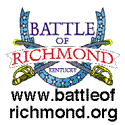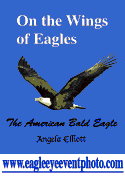|
Enfield popular weapon of choice
at most Kentucky battles, skirmishes
If it had been possible to survey the infantry firearms used in Kentucky Civil War battles and skirmishes, everything from shotguns to flintlocks and percussion models would be evident. But, probably the most popular weapon would have been the Enfield three-band percussion rifle.
The Enfield 1853 Rifle-Musket was used by both the North and the South and was the second most widely used infantry weapon in the Civil War, surpassed only by the Springfield Model 1861 Rifled Musket. The Confederates imported more Enfields during the course of the war than any other small arm, buying from private contractors and gun runners when the British government refused to sell them arms after it became obvious that the Confederacy could not win the war.
It has been estimated that more than 900,000 1853 Enfields were imported to America and saw service in every major engagement from the Battle of Shiloh (April 1862) and the Siege of Vicksburg (May 1863), to the final battles of 1865.
At the Battle of Gettysburg July 2, 1863, members of the 20th Maine Volunteer Infantry, led by Col. Joshua L. Chamberlain, were armed with Enfield 1853 Rifle-Muskets during their famous bayonet charge against a relentless attack by Confederate forces attempting to destroy the left flank of the Union Army at Little Round Top.
The ferocious charge of the 20th Maine, with bayonets fixed to their Enfield Rifle-Muskets, was victorious against the stunned Confederates, and Col. Chamberlain received the Medal of Honor.
The 1853 Enfield is highly sought by black powder shooters and hunters, Civil War re-enactors and British military firearms enthusiasts for its quality, accuracy and reliability. Original Enfield muskets are obtainable, but are expensive.
Muzzle-loaded weapons during the war cost the United States about $20 each. A soldier usually would carry 40-60 rounds of ammunition that came in packets of 20. A standard ammunition pouch had two tin trays, each of 20 rounds, one above the other. Percussion caps were carried in a smaller pouch.
A soldier could load and fire a percussion weapon in one minute or less. The loading procedure was involved, however.
First, the weapon’s ramrod was removed, the tube was swabbed out, and the end was bitten off a paper powder packet and the powder was poured down the barrel. The butt of the rifle was tapped on the ground, a minie ball was dropped into the barrel and paper from the cartridge container was shoved in and tamped with the ramrod. The hammer was cocked, a percussion cap was placed on the chamber nipple and the weapon now was ready to fire.
|












